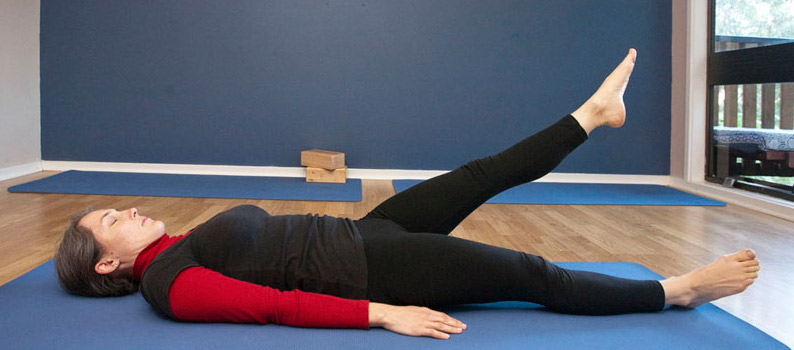Ardh Halasanaa and Halasana

One of the advanced asanas in Yoga, Halasana requires the body to resemble a plow in the final position. Also known as the Plow Pose in the Western World, the Halasana is known for significantly boosting the sexual organs, and has been known for alleviating many other issues in the body related to digestion and blood circulation. The ArdhHalasana, or the Half Plow Pose is a preparatory step towards the Halasana.
How to Go About It
- Lie on the ground with your stomach facing up, legs flat and placed together, and inhale slowly.
- While inhaling, lift your legs up, either one at a time or both at the same time.
- Lift your legs till they are completely straight and perpendicular to the body.
- Once you are in this position, you have completed the ArdhHalasana, and can bring your body to rest after you have stayed in the position comfortably for a certain period of time.
- In order to do the Halasana, instead of keeping the legs perpendicular, stretch them over your head at an angle of 180 degrees, and make sure that the toes come in contact with the floor located a bit above your head.
- You can keep the arms stretched by the sides.
The Benefits
- ArdhHalasana is recommended to those pursuing six pack abs and overall good abdominal health.
- Both the asanas improve the digestion process.
- Blood circulation is considerably improved as well.
- A lot of weight and belly fat can be curbed thanks to these two asanas.
- Issues faced from multiple stomach disorders are lessened.
- Acts as a relief from conditions such as insomnia, infertility and sinusitis.
- Like most other asanas, the Halasana is a known anxiety reliever.
Safety Measures:
- A lot of people struggle to make the toes touch the floor while practicing the Halasana. Don’t force it to happen. If needed, pull your legs back as much as you can and place the toes on a wall.
- ufferers of high blood pressure should not practice either asana.
- Women during their pregnancy periods should not engage in the practice of either asana.
Explore about the Yoga
Classifications of Yoga
- Karma Yoga
- Jnana Yoga
- Bhakti Yoga
- Kriya Yoga
- Asanas / Postures
- ARDHACAKRASANA
- BHUJANGASANA
- CHACKRASANA
- DHANURASANA
- View More
- Different forms of Yoga
- Hatha Yoga
- Kundalini Yoga
- Bhakti Yoga
- Karma Yoga
- View More
- Pranayama
- Suryabhedan
- Ujjayi
- Sheetali
- Sheetkari
- View More
- UN Declaration of Yoga Day
- Objectives of World Yoga Day
- Controversy on Yoga day
- Logo of Internation Yoga Day
- Fundamentals of Yoga
- Hand Mudra
- Yoga Day Messages
- Yoga Day SMS
- Yoga Day What's App Messages
- Yoga Day Essay
- Yoga Day Speech
- When is Yoga Day
- Yoga Day Quotes
- Yoga Day Poems
- Benefits of Yoga
- Slogans on Yoga
- Yoga Day Clipart
- Yoga Day Images
- Articles
- A Way Celebrating Your Health
- 10 Extraordinary benefits of Yoga
